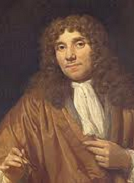Influence of Delft
Delft: the birthplace of Microbiology?
The world of science is a very progressive world; one is trying to understand and control life as much as possible. In iGEM we are even more progressive, we are working in a relative “new” field, called Synthetic Biology. Central in the synthetic biology is the design and construction of new biological parts, devices and system that do not exist in the natural world and the redesign of existing biological systems to perform specific tasks.
These innovative and advanced developments are the result of hours and hours of work done by a lot of genius scientist. However, for every development there should always be a basis. If one would back trace all the innovations to their origin, the basis for all our current lab-work are microorganisms. In that sense, one may consider the discovery of microorganisms as the start of point for all the forthcoming, promising achievements in the field of synthetic biology.
Succeeding with this line of reasoning, one may see Delft as the birthplace of microbiology. Four genius scientists contributed with very important discoveries during these first steps in Microbiology.
This year the Nederlandse Vereniging voor Biotechnologie exist a century and because we are very proud of the important contribution of our Delft’s microbiologists, we would like to pay attention to these four amazing and important scientists.
Scientist's of Delft

Anthonie van Leeuwenhoek
First of all, in 1674 Antoni van Leeuwenhoek looked through his microscope and discovered a totally unknown world, the world of microbiology. These became known due to his correspondence with the Royal Society in London.

Martinus Willem Beijerinck
The second important scientist from Delft was Martinus Willem Beijerinck. He was the first professor of Microbiology in Delft and he is –not for nothing- seen as the founding father of the Delft School of Microbiology.
He was the first person who used the term “virus” for the invisible disease causing material that he had shown to be self-replicating on tobacco leaves –TMV. Beside this, he originated the selective culture technique (now known as enrichment culturing, which is still used!) and was the first to isolate a wide range of microorganisms

Gerrit van Iterson
Gerrit van Iterson jr. was one of Beijerink’s pupils and is the third important scientist. He was the Professor of Applied Botany, which includes a lot of work on tropical products such as rubber and tea. Furthermore Iterson is known due to the fact that he was fascinated by the mathematics underlying plant organisation and development; he was a bio mathematician
Albert Jan Kluyver

Last, but certainly not least, Albert Jan Kluyver. Kluyver was the second Professor of Microbiology at Delft, and a pupil of Iterson. Among Kluyver's achievements is his work on Unity in Biochemistry. In this work he describes that biochemical pathways are essentially similar, no matter what sort of organism. Beside this he showed that it would be wise to combine biochemical and morphological features if one identifies microorganisms. Further he also showed that one can get reproducible results with fungi by using submerged cultures rather than allowing them to develop on the surface of media.
 "
"
















